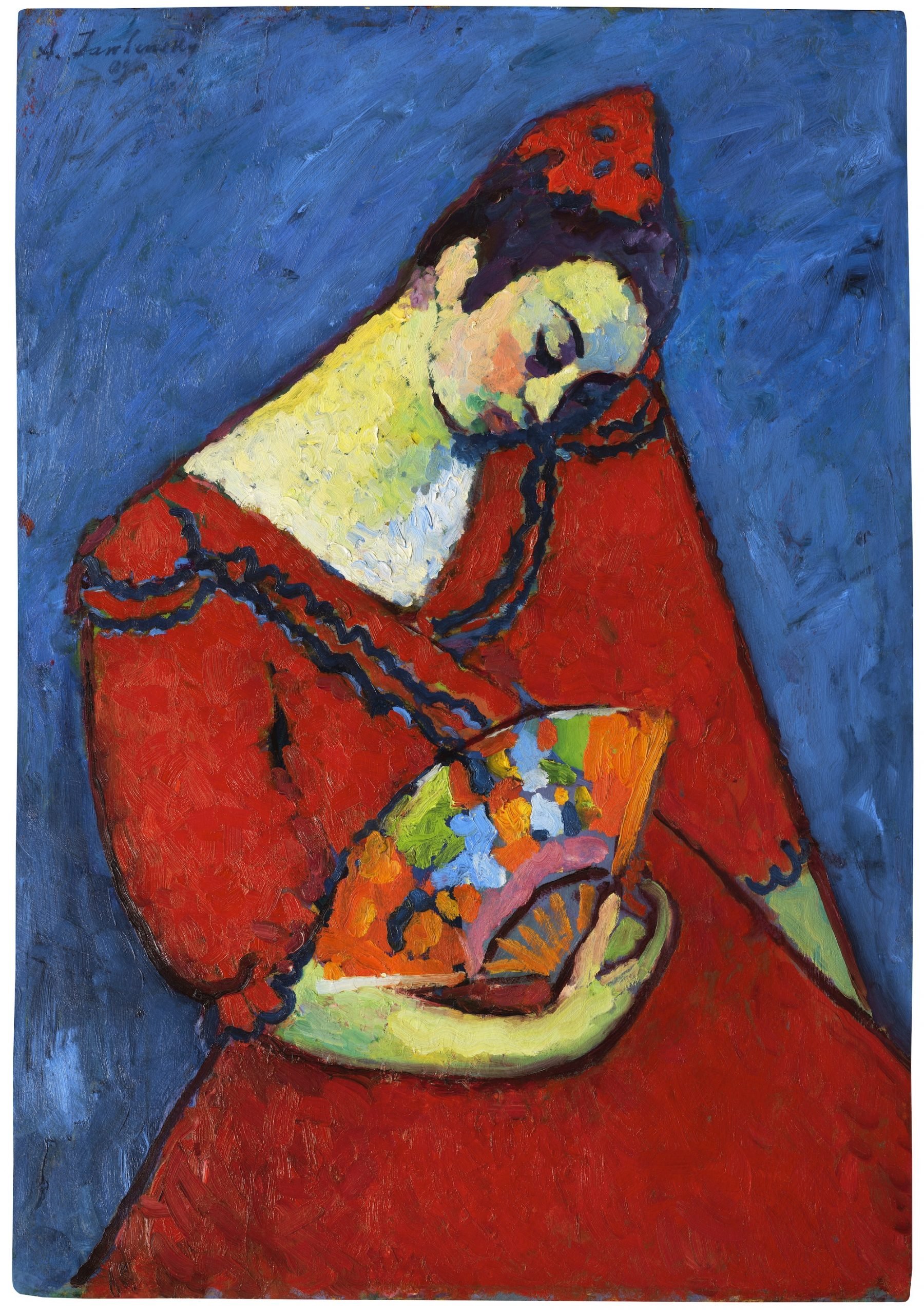
Work of the Week is excerpted from The Back Room, our lively recap funneling only the week’s must-know art industry intel into a nimble read you’ll actually enjoy. Artnet News Pro members get exclusive access—subscribe now to receive this in your inbox every Friday.
It’s rare that a canvas from this period by Alexej von Jawlensky surfaces on the market since many are already ensconced in museums. The Russian-born German Expressionist’s Spanish Dancer (1909), however, has been held in private hands for more than 90 years, and has only been known to the wider world since then by a black-and-white catalogue image that belies its vibrancy.
It goes under the hammer for the first time at Ketterer Kunst’s 70th anniversary sale on June 7, where it is expected to fetch €7 million to €10 million ($7.6 million to $10.8 million). It is the highest price tag in the history of the auction house, which is known for its expertise in German Expressionism.
A landscape scene on the reverse of Jawlensky’s Spanish Dancer.
This portrait is a two-for-one bargain, though. On the reverse of the canvas is a highly stylized landscape study of the Bavarian town of Burnau, where Jawlensky, his partner and fellow artist Marianne von Werefkin, and friends Wassily Kandinsky and Gabriele Münter spent time in 1908. In 1909, the year this was painted, the artists founded the New Munich Artists’ Association, from which The Blue Rider group grew in 1911.
Featuring the artist’s hallmark experimentation with color, Spanish Dancer marks a milestone in not only von Jawlensky’s career but also the development of Expressionism, according to the auction house. It recalls Portrait of the Dancer Alexandr Sakharov, also from 1909, which is in Munich’s Städtische Galerie, as well as Schokko (1910), which set the auction record for von Jawlensky when it sold at Sotheby’s London for $18.6 million in 2008, according to the Artnet Price Database.